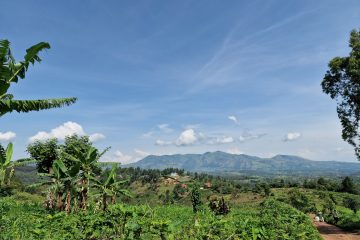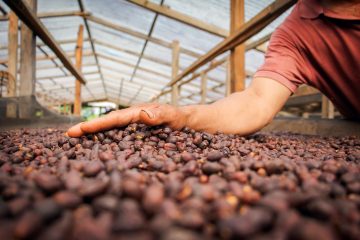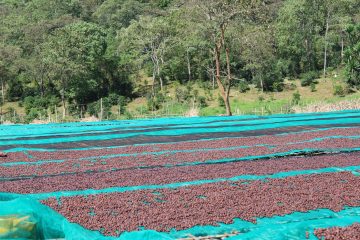June 19 2014 — The first container of Costa Rican coffees has arrived in Oslo, and another is on its way to London — here’s a trip report from our visit earlier this year:
Costa Rica is a newer origin for Nordic Approach — we started small last year with a few lots from different micro-mills. This year we were happy to find even more interesting coffees on the table, and we’re bringing a variety of small lots from different producers to Europe.
A bit of background: generally, we are focusing on two regions: Tarrazu and the West Valley. Tarrazu is basically all coffee, everywhere you look — a bit less touristed and a little farther away from San Jose, with really high elevations up to 2000m and higher. Many of the mills there are producing primarily fully washed coffee, partially because the drying conditions are not ideal for honeys, and partially because their coffee is already tasting fantastic. West Valley is a little closer to the capital with altitudes up to 1800-1900m, and a more stable climate which makes honey-processing easier.

Micro-mills: In the last 5-10 years, more and more farmers have started their own “micro-beneficios” (micro-mills) to process coffee from their own small farms or those of their family members or neighbors. This is why you will see two names on most of our coffees — first the name of the micro-mill, then the name of the farm the coffee comes from, and of course the lot number. Many farms are only a few hectares.
These micro-mills all have mechanical demucilaging equipment (e.g. Eco Pulpers or similar) so they use less water — there are strict water regulations in Costa Rica. Most of the micro-millers are also progressive farmers, taking good care of their plants, separating farms and varietals, separating all lots by daily pickings before cupping, drying on raised beds, etc.
A lot of the farmers I talked to asked me about slow-drying (secado lento) — they had heard that the coffee performs better as it ages if dried on raised beds under shade, and almost every mill I visited either had two-level drying beds or were building them (or building more!)
Overall it’s a very good setup for identifying quality and implementing good processing practices. We were happy to see that many of the micro-mills we bought from last year were standouts on the tables we cupped — that’s a good sign.


Honey processing: Partially in response to the water regulations, many farmers have been experimenting with different processing methods. Like many people, I’ve heard the term “honey process” and cupped “honey” coffees, but I didn’t really have a firm grasp on what it meant. I found that there are some variations on what constitutes a honey-processed coffee. The terms vary by farmer and by country — these are very similar to what are elsewhere called “pulped naturals” — but in Costa Rica the general categories are White, Yellow, Red, and Black honey. The determining factors are:
1) Mucilage: the first and most important criteria for what type of honey you’re getting. When put through the mechanical demucilager, the micro-mill can adjust for how much mucilage (sugars/pulp/mesocarp) to leave on the parchment. This can range from a fully washed coffee, where you remove as close to 100% of the sugars as possible, to a red/black honey, where you leave all the sugars on after removing the skin.
The general guidelines are:
White honey: 80-90% (or up to 100%) of mucilage removed
Yellow honey: 50-75% of mucilage removed
Red honey: 0-50% of mucilage removed
Black honey: minimum mucilage removed
2) Drying: making a honey coffee is not just a matter of setting your eco-pulper to the right level of sugar removal. Drying conditions also play a big role, especially in differentiating a red honey from a black honey. Oftentimes the farmer will not know which one it will be until the parchment has been drying for a few days, and depending on the amount of sugar coloration/fermentation on the outside of the parchment, it is classified as red or black honey.
All photos below are from Granitos de Ortiz micro-mill, where they had helpfully labeled different samples of the processes they do. They are a new mill that started up 1-2 years ago, they are already doing a great job and we’re really happy to be buying coffee from them this year.




We’re excited to expand our relationship with Costa Rica and to offer more small lots from more micro-mills this year. The cup profiles can be very special, with great structure, complexity, and lots of sweetness. We also think that there is a lot of potential to work long-term with these micro-mills, even to do experiments on varieties and processing with individual farmers.
Coffees have arrived to Oslo and more are coming to the UK, so stay tuned!
-Alec


